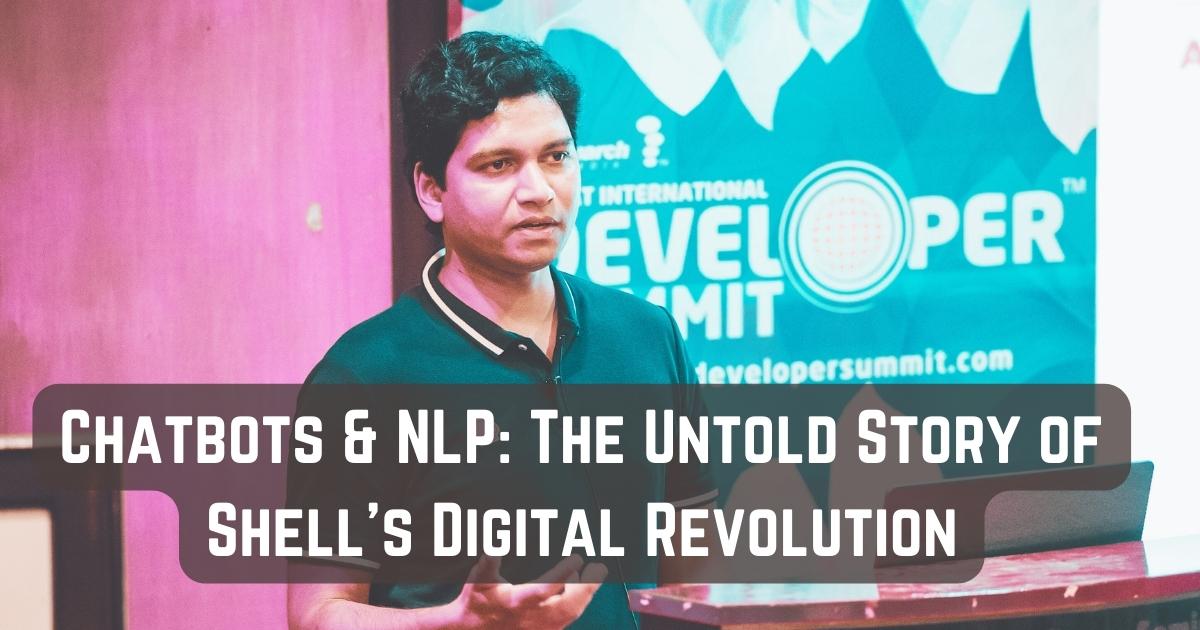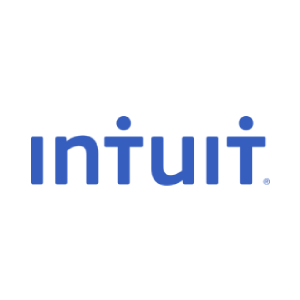
“Once again Saltmarch has knocked it out of the park with interesting speakers, engaging content and challenging ideas. No jetlag fog at all, which counts for how interesting the whole thing was."
Cybersecurity Lead, PwC

In today's digital-first world, chatbots are no longer just a nice-to-have; they're a business imperative. Harshad Parchand, a key player in Shell's Agile Hub division, recently took the stage at Great International Developer Summit to unpack the transformative power of chatbots, especially within a legacy corporation like Shell. Known for its oil and gas operations, Shell is quietly making waves in the tech space, thanks to a dedicated team of developers who are reimagining the future of business solutions.
Parchand's talk takes us behind the scenes of Agile Hub, a division laser-focused on solving real-world business challenges through tech innovation. Picture this: a distributor wants to buy lubricants but is lost in the complexities of procedures. Enter Agile Hub, which crafts a solution that not only simplifies the process for the end-user but also boosts Shell's revenue. The division operates on a set of five engineering principles, ranging from the use of open-source tech to continuous integration and deployment, all the way to leveraging dockerized or even serverless runtime environments.
But let's get to the heart of the issue: chatbots. Parchand dives into the transformative advantages of chatbots, the alchemy of Natural Language Processing (NLP), and the step-by-step guide to constructing a chatbot from the ground up. Think of chatbots as your digital diplomats, engineered to not just answer but to understand and engage in meaningful dialogue with humans. When you lace this with the power of NLP, you're elevating the game. You're not merely receiving automated replies; you're interacting with a system that understands context, tone, and even underlying intentions.
Going beyond the basics, chatbots serve as a catalyst for enhanced customer engagement. They're not just reactive; they're proactive, initiating conversations that can lead to better marketing outcomes. They can significantly reduce website bounce rates by keeping the user engaged, providing immediate answers, and even guiding them through a sales funnel.
But that's not all. Chatbots are also treasure troves of data. They collect invaluable insights into customer behavior, preferences, and pain points, which can be analyzed to refine business strategies. This data-driven approach can even extend to human resources, where chatbots can assist in the recruitment process by screening candidates or answering preliminary queries, thereby freeing up your HR team to focus on more nuanced aspects of hiring.
And let's not forget the efficiency factor. Chatbots are adept at handling a wide array of frequently asked questions, allowing your human workforce to dedicate their time to more complex, value-added tasks. This not only improves productivity but also enhances job satisfaction among employees who can now focus on more meaningful work.
So, you might be wondering, what's the real impact of all these chatbot advantages? Parchand narrows it down to three pivotal points: 24/7 availability, scalability, and cost-efficiency, the pillars that uphold the chatbot revolution. Say goodbye to the days of needing a human at the helm around the clock; chatbots have redefined customer service by being ever-present. And as for scalability, a minor adjustment to your existing infrastructure can empower your chatbot to effortlessly handle an expanding user base, setting the stage for business growth without the growing pains.
Switching gears to the nitty-gritty, Parchand discusses the importance of selecting the right NLP solution that aligns with your product and audience. Once that's in place, training the NLP model is the next critical step. He breaks down the process, demystifying terms like "token," "entity," and "intent," which are the building blocks of any NLP training regimen.
But it's not just about picking an NLP solution; it's about choosing a solution that can evolve with your business needs. The right NLP solution can do more than just understand language; it can provide actionable insights that can be a game-changer for your business. It's not just a tool; it's a strategic asset that can help you understand your customers' pain points better, thereby allowing you to refine your products and services.
And this brings us to the next layer of complexity: training your NLP model. It's not a one-and-done deal; it's an ongoing process that requires continuous data input and fine-tuning. The terms "token," "entity," and "intent" might sound technical, but they're the linchpins that hold your NLP model together. Understanding these terms is crucial for anyone looking to delve into the world of chatbots and NLP.
So, after all this technical talk, you might be wondering what the real-world applications are. Well, Parchand has got you covered. He delves into the complexities of multi-language support in the next section, highlighting how chatbots can be the ultimate tool for global business expansion. Let's unpack that a bit. Multi-language support isn't just about translating text; it's about understanding the cultural nuances, idioms, and expressions that come with each language. It's a gateway to making your business truly global, allowing you to connect with customers from different linguistic backgrounds in a meaningful way.
And it's not just about customer interaction; it's also about market penetration. When your chatbot can communicate in multiple languages, you're essentially opening up new markets and demographics that were previously unreachable. It's like having a local store in every country, without the overhead costs of physical locations. But of course, this doesn't come easy. Different languages have their own set of challenges, from slang to dialect variations, requiring a nuanced approach to bot training. This is where the importance of a well-trained NLP model comes into play. It's not just about understanding words but understanding the intent and context behind those words in different languages.
So, with all these linguistic intricacies, how do you ensure that your chatbot is up to the mark? Parchand answers this by diving into the various testing methodologies in the next section, emphasizing the need for rigorous quality assurance to make your chatbot not just functional but exceptional.
Let's dig deeper into what "rigorous quality assurance" really means. It's not just about checking if the chatbot can answer questions; it's about ensuring that the chatbot can handle a variety of scenarios, including edge cases that may not be immediately obvious. This involves a range of testing methods, from unit tests that examine individual components to integration tests that check how well the chatbot interacts with other systems.
And then there's the matter of security. In a world where data breaches are becoming increasingly common, ensuring the security of your chatbot is non-negotiable. This means not only protecting the data that the chatbot collects but also safeguarding the integrity of the chatbot itself. Security testing should be an integral part of your quality assurance process, designed to identify and mitigate potential vulnerabilities.
But what happens when things don't go as planned? Even the best chatbots can encounter unexpected queries or situations. This is where Parchand's insights into error handling come into play, as he underscores the importance of robust fallback mechanisms and error capture systems in the concluding section of his talk. Error handling isn't just a safety net; it's an opportunity for improvement. Every time a chatbot encounters an error, it's a chance to learn, adapt, and become better. Robust fallback mechanisms do more than just keep the conversation going; they collect data on where the chatbot failed, providing invaluable insights for future development. Moreover, error capture systems are not just about identifying mistakes; they're about understanding why those mistakes happened in the first place. This level of understanding is crucial for ongoing optimization, allowing developers to make data-driven decisions that enhance the chatbot's performance over time.
In wrapping up his talk, Parchand does more than just outline the technicalities of chatbot development. He paints a picture of the transformative potential of integrating chatbots with NLP, signaling Shell's shift from a traditional energy company to a tech-savvy, forward-thinking enterprise. When innovative technology meets business acumen, the sky's the limit.
Watch the full video of the talk, here.
Have questions or comments about this article? Reach out to us here.
Banner Image Credits: Harshad Parchand at Great International Developer Summit

“Once again Saltmarch has knocked it out of the park with interesting speakers, engaging content and challenging ideas. No jetlag fog at all, which counts for how interesting the whole thing was."
Cybersecurity Lead, PwC

“Very much looking forward to next year. I will be keeping my eye out for the date so I can make sure I lock it in my calendar."
Software Engineering Specialist, Intuit

“Best conference I have ever been to with lots of insights and information on next generation technologies and those that are the need of the hour."
Software Architect, GroupOn

“Happy to meet everyone who came from near and far. Glad to know you've discovered some great lessons here, and glad you joined us for all the discoveries great and small."
Web Architect & Principal Engineer, Scott Davis

“Wonderful set of conferences, well organized, fantastic speakers, and an amazingly interactive set of audience. Thanks for having me at the events!"
Founder of Agile Developer Inc., Dr. Venkat Subramaniam

“What a buzz! The events have been instrumental in bringing the whole software community together. There has been something for everyone from developers to architects to business to vendors. Thanks everyone!"
Voltaire Yap, Global Events Manager, Oracle Corp.